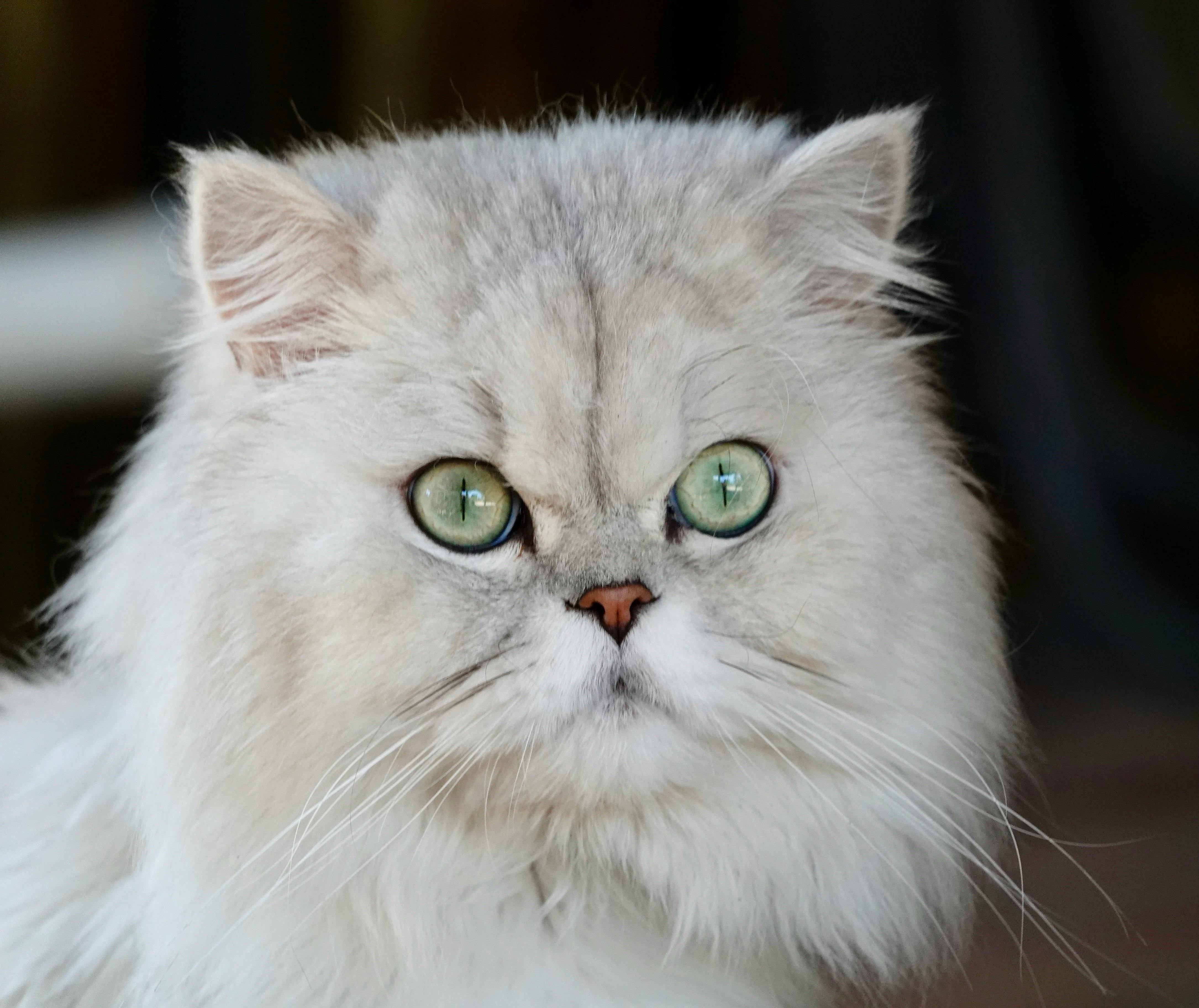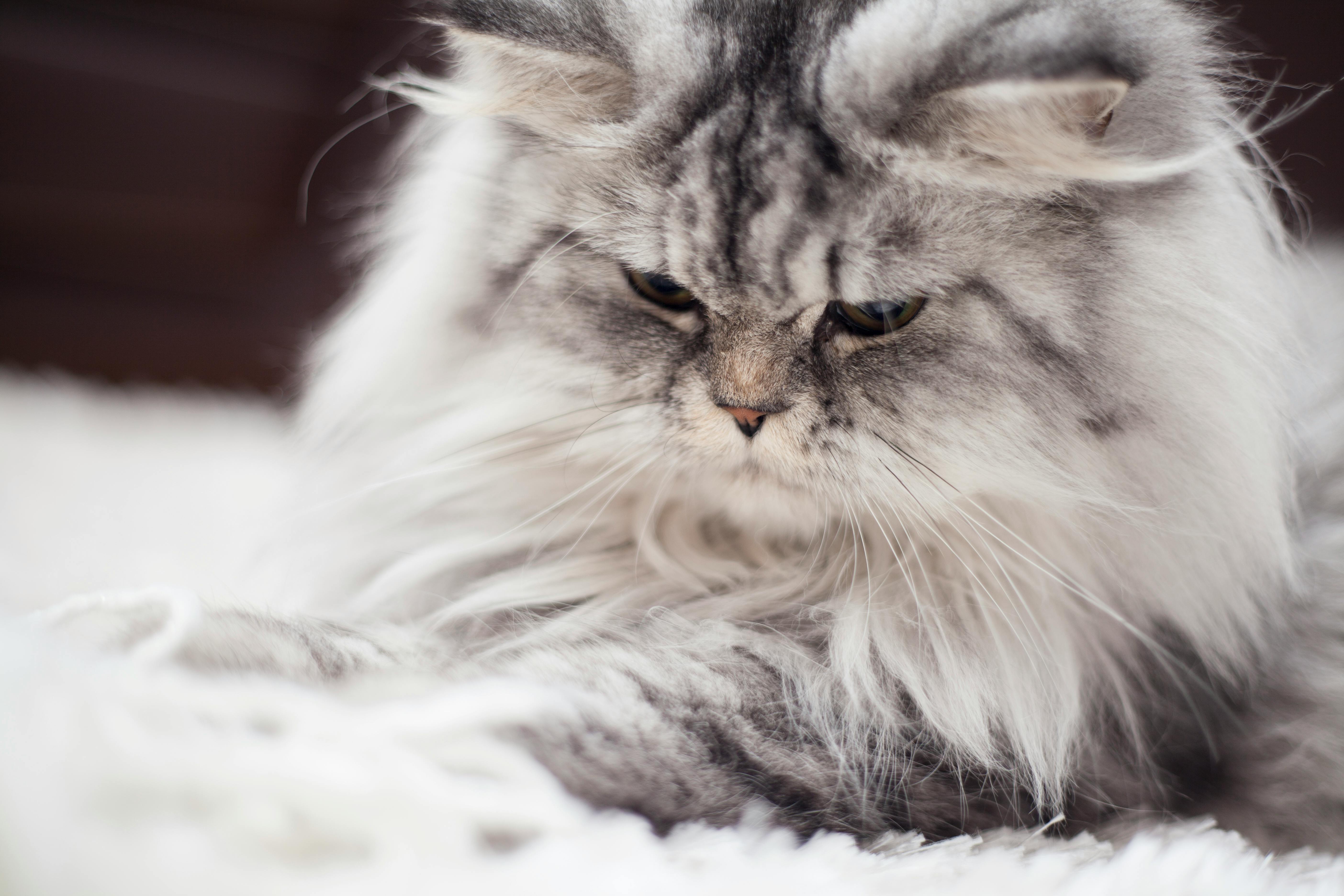Contents:
-
The Origin and History of the Persian Cat
-
Appearance and breed standard
-
Character and disposition
-
Persian Cat Care – What You Need to Know
-
Health and life expectancy
-
The price of a Persian cat and the choice of breeder
-
Persian cat – who is this breed ideal for?
-
Interesting facts about Persian cats
-
Frequently asked questions
The Origin and History of the Persian Cat
The Persian cat originated in ancient Persia (present-day Iran), where it was prized for its beautiful fur and calm disposition hundreds of years ago. It came to Europe around the 17th century, and the early versions were different from today's, with more natural facial features and shorter fur.
In the 19th century, with the development of exhibitions and pedigree breeding, selective crosses began to obtain the characteristic, "flat" muzzle and abundant fur. Today, there are two main lines:
-
Traditional Persian cat ("doll face") - with a less flattened muzzle,
-
The modern Persian cat – with an extremely flat face, bred mainly for exhibitions.
Appearance and breed standard
Physique:
-
Figure: stocky, short, strong
-
Legs: short, massive
-
Paws: rounded, large
-
Tail: short, thick, fluffy
Head:
-
Shape: round, wide
-
Nose: very short, often set almost horizontally (so-called "stop")
-
Eyes: large, shiny, intensely colored - depending on the coat, they can be blue, copper, green
-
Ears: small, rounded, set low and wide
Hair:
-
Extremely long and thick
-
Silky, with a large ruff around the neck and breeches on the hind legs.
Color varieties:
The Persian cat comes in over 100 different color variants :
-
solid (e.g. white, black, blue, red, cream),
-
dymne (smoke),
-
silver and gold (chinchilla),
-
tabby,
-
colorpoint (himalajski),
-
two-color and three-color (tortoiseshell).
Personality of the Persian cat
The Persian cat is the embodiment of gentleness and calm .
Character traits:
-
Calm and balanced
-
Not very active physically - loves to laze around
-
Loyal and affectionate towards the guardian
-
He is not pushy – he does not impose himself, but he likes being around people.
-
He tolerates solitude well , but likes routine and quiet surroundings.
-
Rarely vocalizes - some individuals almost never meow
Persian cat and children:
It is great for families with children, but due to its delicate structure, contact should be gentle and supervised.
Persian Cat Care – Owner Responsibilities
The Persian cat requires regular and careful care – it is not a breed “for the forgetful”.
Combing:
-
Daily combing with a natural bristle brush or metal comb
-
Prevents hair from tangling and dreadlocks from forming
Baths:
-
Every 4–8 weeks, depending on your cat's lifestyle
-
Only use cosmetics dedicated to long-haired cats.
Eye and nose cleaning:
-
Flat mouths cause tearing problems - you need to wash your eyes with saline every day
-
Wiping the nose (the discharge often collects in the folds)
Nails and hygiene:
-
Regularly trim the claws
-
A clean litter box is an absolute must – Persian cats are very clean and sensitive to unpleasant odors.
Health and life expectancy
A Persian cat can live to be 15–17 years old , although with good care some individuals live up to 20 years.
The most common health problems:
-
Polycystic kidney disease (PKD) – a genetic disease that can be detected with a DNA test
-
Brachycephaly – a flat face can make breathing difficult
-
Lacrimation disorders and conjunctivitis
-
Dental diseases (tartar, gingivitis)
-
Overweight (low activity promotes weight gain)
Regular visits to the vet and preventive care (vaccinations, deworming, dental check-ups) are crucial.
The price of a Persian cat and the choice of breeder
The price depends on:
-
Pedigree (FIFe, TICA, WCF)
-
Cat category: show, breeding, lap
-
Coat colors (some varieties are rare and more expensive)
Price ranges:
-
Cat without a pedigree: PLN 800–1500 (not recommended – possible genetic defects)
-
Pedigree cat: PLN 2,500 – 7,000 (most often)
-
Rare colors or show lines: up to PLN 10,000+
-
Note : buy only from legal breeders! Check the opinions, living conditions of the animals and documents (pedigree, PKD tests).
Who is a Persian cat for?
The Persian cat is an ideal choice for people who:
-
They are looking for a calm, not very active cat.
-
They live in an apartment or house with a balcony
-
They enjoy grooming rituals and have time for daily combing.
-
They want a cat that appreciates peace and gentle contact.
Not suitable for people who:
-
They are looking for an active or climbing cat.
-
They often travel and leave their pet alone for longer periods of time.
-
They don't want to or can't devote time to care
Interesting facts about the Persian cat
-
Persian cats are frequent heroes of memes and cartoons (e.g. the movie "Mr. Tinkles")
-
In the Middle Ages, Persian cats were believed to bring good luck and protect the home.
-
Their fur can grow up to 10 cm long!
-
There are also exotic Persians - with shorter fur but the same appearance.
Frequently asked questions
Does a Persian cat shed a lot? Yes, especially during shedding. Daily brushing significantly reduces the amount of hair in the home.
Can a Persian cat be an outdoor cat? Definitely not. Their build and fur are not suited to living outside. They are a typical indoor breed.
How to teach a Persian cat hygiene? This is a very clean breed – they are easy to train to use a litter box. You just have to keep it perfectly clean.
Persian Cat
SUBSCRIBE TO THE NEWSLETTER
Sign up for our newsletter
and you won't miss a thing.
All rights reserved









